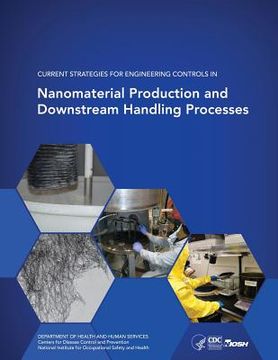Share
Current Strategies for Engineering Controls in Nanomaterial Production and Downstream Handling Processes
Centers for Disease Cont And Prevention
(Author)
·
National Institute Fo Safety and Health
(Author)
·
D. Human Services
(Author)
·
Createspace Independent Publishing Platform
· Paperback
Current Strategies for Engineering Controls in Nanomaterial Production and Downstream Handling Processes - And Prevention, Centers for Disease Cont ; Safety and Health, National Institute Fo ; Human Services, D.
Choose the list to add your product or create one New List
✓ Product added successfully to the Wishlist.
Go to My Wishlists
Origin: U.S.A.
(Import costs included in the price)
It will be shipped from our warehouse between
Friday, July 19 and
Friday, July 26.
You will receive it anywhere in United Kingdom between 1 and 3 business days after shipment.
Synopsis "Current Strategies for Engineering Controls in Nanomaterial Production and Downstream Handling Processes"
The focus of this document is to identify and describe strategies for the engineering control of worker exposure during the production or use of engineered nanomaterials. Engineered nanomaterials are materials that are intentionally produced and have at least one primary dimension less than 100 nanometers (nm). Nanomaterials may have properties different from those of larger particles of the same material, making them unique and desirable for specific product applications. The consumer products market currently has more than 1,000 nanomaterial-containing products including makeup, sunscreen, food storage products, appliances, clothing, electronics, computers, sporting goods, and coatings. As more nanomaterials are introduced into the workplace and nano-enabled products enter the market, it is essential that producers and users of engineered nanomaterials ensure a safe and healthy work environment. The National Institute for Occupational Safety and Health (NIOSH) is charged with protecting the safety and health of workers through research and training. An area of current concentration is the study of nanotechnology, the science of matter near the atomic scale. Much of the current research focuses on understanding the toxicology of emerging nanomaterials as well as exposure assessment; very little research has been conducted on hazard control for exposures to nanomaterials. As we continue to research the health effects produced by nanomaterials, particularly as new materials and products continue to be introduced, it is prudent to protect workers now from potential adverse health outcomes. Controlling exposures to occupational hazards is the fundamental method of protecting workers. Traditionally, a hierarchy of controls has been used as a means of determining how to implement feasible and effective control solutions. Elimination; Substitution; Engineering Controls; Administrative Controls; Personal Protective Equipment. Following this hierarchy normally leads to the implementation of inherently safer systems, where the risk of illness or injury has been substantially reduced. Engineering controls are favored over administrative and personal protective equipment for controlling existing worker exposures in the workplace because they are designed to remove the hazard at the source, before it comes in contact with the worker. However, evidence of control effectiveness for nanomaterial production and downstream use is scarce. This document is a summary of available technologies that can be used in the nanotechnology industry. While some of these have been evaluated in this industry, others have been shown to be effective at controlling similar processes in other industries. The identification and adoption of control technologies that have been shown effective in other industries is an important first step in reducing worker exposures to engineered nanoparticles. Our hope is that this document will aid in the selection of engineering controls for the fabrication and use of products in the nanotechnology field. As this field continues to expand, it is paramount that the health and safety of workers is protected.

